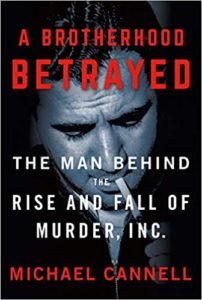Throughout the long lurid history of the New York Police Department—the corruption scandals and serial offenders, manhunts and race riots—one institution held steady: the John Jovino Gun Shop, where generations of patrolmen and detectives bought the .38 Specials slung on their hips, along with whistles, rosewood night sticks and other accoutrements of law enforcement. The NYPD issued basic gear, but most cops upgraded or added on.
Jovino’s closed last March under the weight of rising downtown rents, supply chain disruptions and the pandemic. It was the oldest gun shop in America, with cameos in such movies as “Serpico” and “Mean Streets.”
Founded in 1911 by an Italian saddle maker named John Jovino, the shop stood as a noir landmark in one of New York’s most unusual backwaters. It was semi-famous for the revolver-shaped sign pointing westward across Centre Market Place to the grand old soot-smeared Beaux-Arts police headquarters.
Jovino himself manned the counter as dapper as a mâitre d’, habitually dressed in a black suit with a detachable white collar and cuffs. He was on first name basis with every member of the force, or so it seemed.
Jovino’s reliably smelled of holster leather and gunpowder. Shoppers browsing among black police shoes and fingerprinting kits displayed in glass cases could feel the occasional thump beneath their feet, accompanied by a muffled report, arising from the basement shooting gallery where patrolmen came to sharpen their aim.
The one-block-long Centre Market Place was to the NYPD what Diagon Alley is to Harry Potter, a self-contained little world catering to its own. Cops could shop for bulletproof vests and Smith & Wessons at Jovino’s, then proceed down the block to take their off-duty whiskey and beer at Headquarters (now O’Nieal’s), a German bar equipped with an underground passage so that police brass could discreetly come and go from their offices.
Next door to Jovino’s a fraternity of police reporters spent days and nights in a three-story brick tenement building, known as the police shack, furnished with rickety desks, typewriters and overflowing ashtrays. They drank and gambled while waiting for a police Teletype to alert them to the next story. “In those days a nightlong poker game was played in the back room, referred to as the ‘den of the forty thieves,’” wrote Arthur Gelb, who would later become managing editor of The New York Times.
From the mid-1930s to 1947 Weegee (aka Arthur Fellig), the dean of tabloid photographers, worked from a cluttered room directly above Jovino’s, for which he paid seventeen dollars a month. He perched on the fire escape above the revolver sign with his boxy black Graflex flashbulb camera for choice views of handcuffed mobsters and murderers brought in to headquarters for booking.
Jovino sold the shop in the 1920s to the Imperato family. The NYPD moved to a new headquarters near City Hall in 1973. Ten years later the Imperatos moved the shop, along with its trademark revolver sign, to a new location around the corner, on the border of Chinatown and Little Italy. (Decades later, when Centre Market Place had evolved into a stylish address, a young couple renovating the former Jovino building found bullet holes lodged in the basement walls where patrolmen once practiced their aim.)
Jovino’s was not just selling guns but also manufacturing them. Starting in 1996 the Imperatos produced a line of Civil War-era Henry rifles, Colt pistols and cap-and-ball revolvers from a gun factory in Brooklyn, and later New Jersey. Ironically, members of the Imperato family had no personal interest in owning or using weapons. They never hunted or shot target practice. “Maybe the guys who run Lobel’s meat market are, you know, vegetarians. You never know,” Anthony Imperato told The New York Times.
Jovino’s catered to police, but any qualified buyer could purchase there, not all of them law abiding. A 2003 analysis conducted by a professor in the Columbia University School of Public Health showed that despite New York’s relatively stringent gun laws nearly one percent of guns used in New York City crimes came from Jovino’s, though Jovino may not have sold directly to the offender.
A Chinese immigrant and former policeman named Charles Hu, known in the neighborhood as Gun King Charlie, took over the shop in 1995. He could no longer count on steady clientele from the police department, since the NYPD had long since opened an internal firearms bureau.
He fought a long, hard struggle with rising downtown rents, tightening gun restrictions and competition from online retailers. The pandemic delivered the final blow. Hu closed the shop on March 22. “All my life I’ve never taken a vacation or sick day,” he told “Jeremiah’s Vanishing New York,” a blog devoted to city relics lost to gentrification. “My whole life went into this.”
Jovino’s may be closed, but the revolver sign has found a new home. While working as an advertising creative director David Buckingham developed a fascination with the sign. “I used to walk blocks out of may way to look at it,” he said. “I just stared at it.” He begged Hu to give him the sign if John Jovino ever folded. Buckingham, now a sculptor living in Los Angeles, received a phone call from Hu in February: the gun shop was closing and the revolver was his. For the time being it resides with a friend in Gowanus until Buckingham can figure out how to transport it to his Los Angeles studio where, not coincidentally, he often hammers out sculptures that play off the gun’s stark profile. “It planted a seed long ago,” he said.
*


















